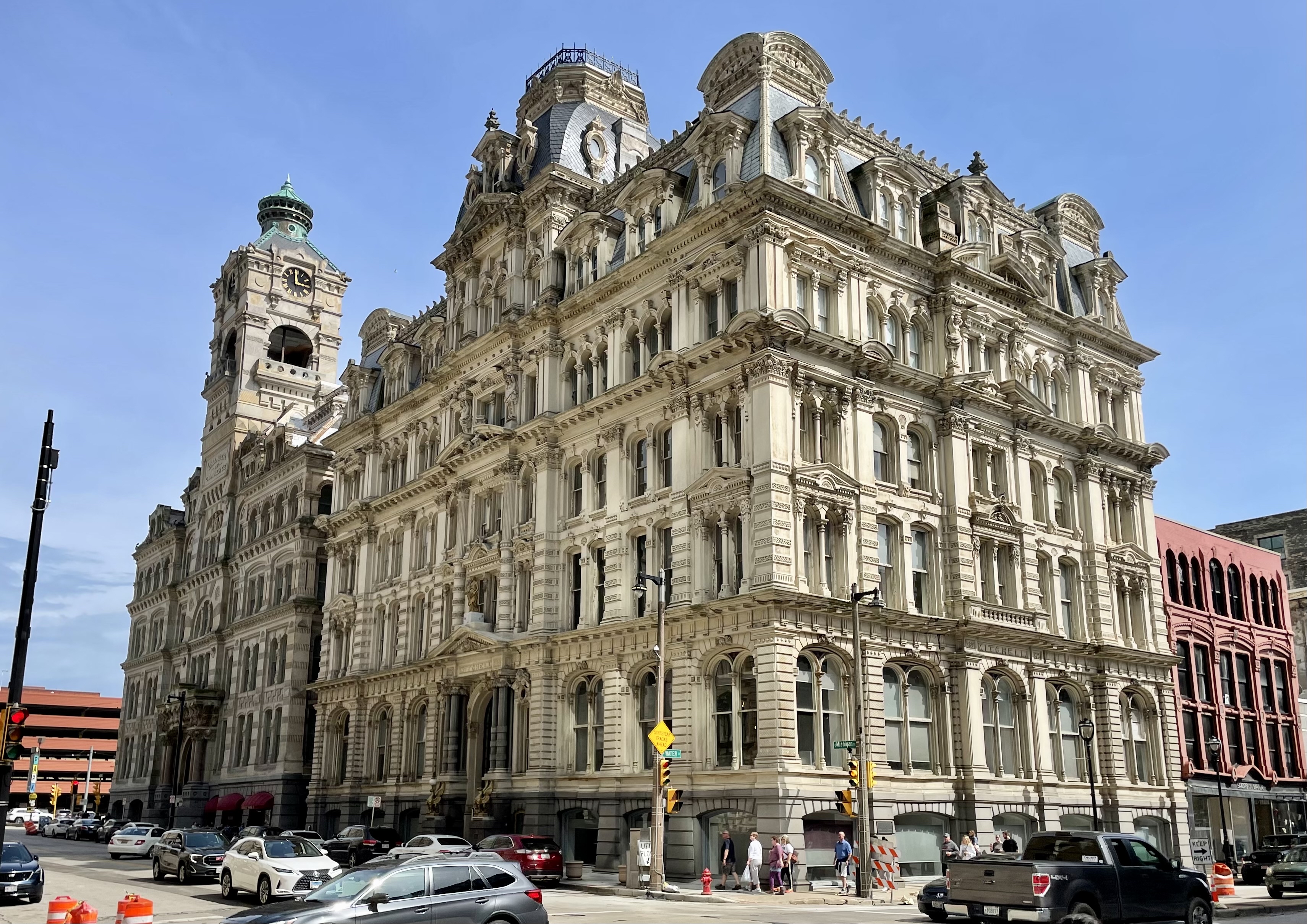
Let Milwaukee Build
Whenever I go to the city I end up looking about at the old pre-1940's buildings; especially the grand, stone buildings like above. At the same time, when people purchase one of them, they have the right to decide what is done with it; it is theirs and not ours. The process Milwaukee uses to designate buildings historic has become a tool used to slow new development rather then protect historically significant, unique buildings. Every building has an interesting history but the vast majority should not be protected.
I propose only the owner should be allowed to initiate the historic designation process. If a building is sold without having been designated, only the new owner may decide to submit it. One way to lower building costs and maintain sufficient quantities of affordable housing is to maintain a simple, predictable set of rules. When we allow any random person to trigger a historic designation or require a committee to approve renovation or new building designs, the delays and special material costs lead directly to more expensive housing for everybody.
Potential purchasers or renovators of old buildings are frightened off by the high costs associated with historic renovations and the difficulty they will encounter receiving approvals. The owner may want to use a $1,000 aluminum clad window but the local committee requires a period appropriate wood window that costs $8,000. Buildings that could be renovated and utilized will fall into disrepair and eventually being demolished.
Devi Shastri of the Milwaukee Journal Sentinel reported the University of Wisconsin-Milwaukee purchased the non-historically designated Columbia St. Mary's Hospital complex in 2010. Emphasis added by me.
The six-building Columbia complex, which spans more than four city blocks, spent years sitting largely empty since the purchase — the victim of a lack of public funding. In recent years, that's changed for all but one of the buildings.
Renovating and putting back into use that building, which is the original hospital building and is known as "A Building," has become "infeasible," Geoff Hurtado, UWM's associate vice chancellor for facilities planning and management said.
UWM repurposed 5 of the 6 original buildings but determined the cost was too great to save the original Columbia Hospital; In January 2020 they announced their plan to for demolition. They spent more then two years pushing back against a historic designation submitted by a random individual whom no longer lives in the neighborhood. The person remembers the building fondly from childhood and therefore feels the building should be protected and the owner's right to demolish restrained.
The current system presumes an owner's cost-benefit analysis is unacceptable criteria for making decisions and that they lack a desire to preserve the character of their own building. Therefore the designation process is essential for protecting buildings on behalf of locals that enjoy their appearance. During the 1960's many historic buildings were cleared to make way for highways, apartments, office buildings, and dorms. A nostalgic view of these long gone places creates a desire to preserve what remains but we must not allow our personal reminiscence to block growth and progress that can drive Milwaukee forward and create badly needed prosperity within the community.
View buildings like restaurants; the interior of a restaurant changes from occupant to occupant; if their funds are tight they will make small changes to the previous theme; maybe buy new tables and hang different pictures on the wall. If the venture is well funded they might make a more dramatic change or attempt to restore the look to it's original splendor. Also common is for a successful restaurant to outgrow their space and move into a larger building at a more attractive location; see Odd Duck for a recent example. Odd Duck moved to a more visible, higher capacity place while their old space is now welcoming Tulum Latin Gastropub.
Within a single area restaurants are big or small, fancy or relaxed, cheap or expensive, with many differing cuisines. The variety is part of what makes a desirable neighborhood. Observe in Milwaukee the makeup of the most in demand neighborhoods like Brady Street, the Lower East Side, East Town, the Third Ward, the Water Tower Neighborhood, Bay View, or Wauwatosa; new high rises exist comfortably next door to 130 year old houses of many different geographic architectural styles.
Delaying new, often higher density, development drives up the cost of housing and makes it more difficult for lower income families to move into neighborhoods that provide the most opportunities. If a new apartment building is constructed near an older apartment building rents of the older building will likely decrease since the newer building will draw some tenants away. When there are more empty apartments and homes, their prices decrease thus allowing new people to move in. The most desirable buildings will likely maintain a higher price but the majority will need to adjust to the ebbs and flows of demand.
Recent Examples of Delays